
1/ Ryan v South West Ambulance Service is a fascinating EAT judgment for everyone who loves to ponder on Essop. It's a beautifully crafted judgment as well as HHJ Tucker's 2nd effort in 2 months to improve us all as practitioners. A real advantage of an ex-EJ being in the EAT.
3/ The case involves a 67-year-old employed in education/learning development roles. The Respondent put in place a Talent Pool policy. Advantages of being in the talent pool (TP) were additional training & (relevantly) that some managerial appointments picked solely from the TP.
4/ There were 3 ways to get into the Talent Pool: (i) being graded as exceeding expectations on appraisal; (ii) appealing when graded at a lower grade; (iii) through self-nomination (for which there were 2 fortnightly windows a year).
5/ For reasons not established at trial, the age range in the TP was such that those aged 55-70 were significantly less likely to be in the TP than those in younger age ranges.
6/ Ms Ryan was not in the TP. Her grade was below the required grade, but she neither appealed it nor sought to self-nominate. That may have been through line management discouragement resulting from her age, but that's not material to the appeal.
7/ Following a restructure & being placed in a role at a lower grade, but with 2-years pay protection, Ms Ryan applied for 2 posts, both of which were filled from the TP and therefore neither of which she was even considered for. She brought an indirect discrimination claim.
8/ She relied on a PCP of only promoting managerial staff based on pre-existing membership of the TP. She relied on a group disadvantage of under-representation of those 55-70 in the TP, & individual disadvantage of being denied the opportunity to be considered for the 2 posts.
9/ The ET accepted the establishment of the PCP & the asserted group disadvantage. Whilst considering she also prima facie suffered the individual disadvantage, the ET went on to consider whether she was an undeserving claimant as per Essop.
10/ The Essopian undeserving claimant is one who may fall within the group suffering the discriminatory disadvantage but who isn't disadvantaged for that reason. In Essop, the example is given of the candidate who fails the exam due to lateness of failure to turn up for it. 
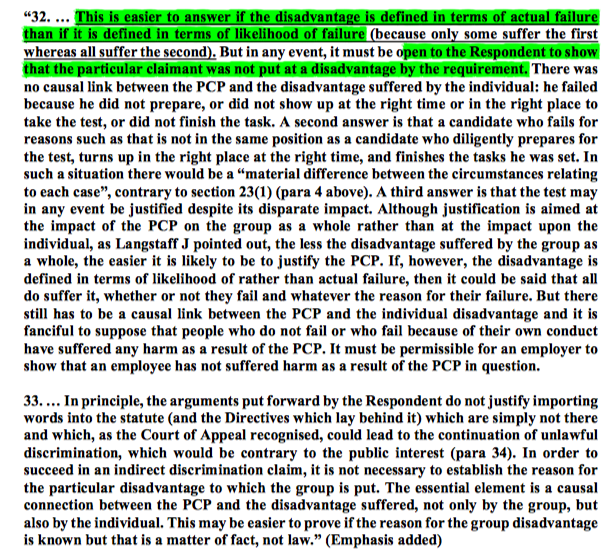
11/ The undeserving claimant (or coat tailer/tailcoater - Hale in the SC & Underhill in the CA disagree on this crucial lexical point) needs to be dealt with in circumstances where the SC in Essop held that s.19 EqA doesn't require a claimant to show the reason for disadvantage.
12/ In Essop, the SC held there were 3 ways to deal with such a claimant: (i) the R shows they weren't put at the disadvantage suffered by the group (ii) a material difference of comparators under s.23 is relied upon, or (iii) through justification.
13/ In Ryan, the ET decided Ms Ryan was an undeserving claimant given she'd neither appealed her appraisal nor self-nominated even though she knew such remedial actions were available to her. She wasn't offered the job as she wasn't in the TP but she'd not tried to gain entry. 
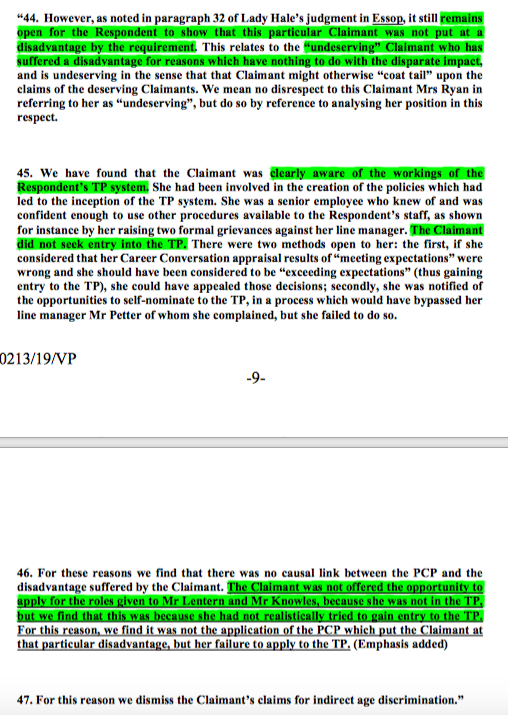
14/ Her claim therefore failed. As belt & braces, the ET also found the TP justified (although this was overturned on appeal, it's not as interesting so not in this thread - but is a point remitted in any event).
15/ Ms Ryan appealed against that decision, asserting that all the necessary elements of s.19 had been established & the ET had erred in finding her an undeserving claimant by essentially requiring her to establish why she was disadvantaged.
16/ If the group disadvantage was the lower likelihood of being in the TP, then Ms Ryan asserted that she need not show she had tried all means to get into the TP before she could show individual disadvantage. By her age she was less likely to be in the TP, & that was enough.
17/ The EAT agreed. There was correspondence between the group & individual disadvantage here. Unusually, if the Resp wanted to show Ms Ryan to be an undeserving claimant, it needed to show in this case had she appealed/self-nominated she'd have been accepted into the TP. 


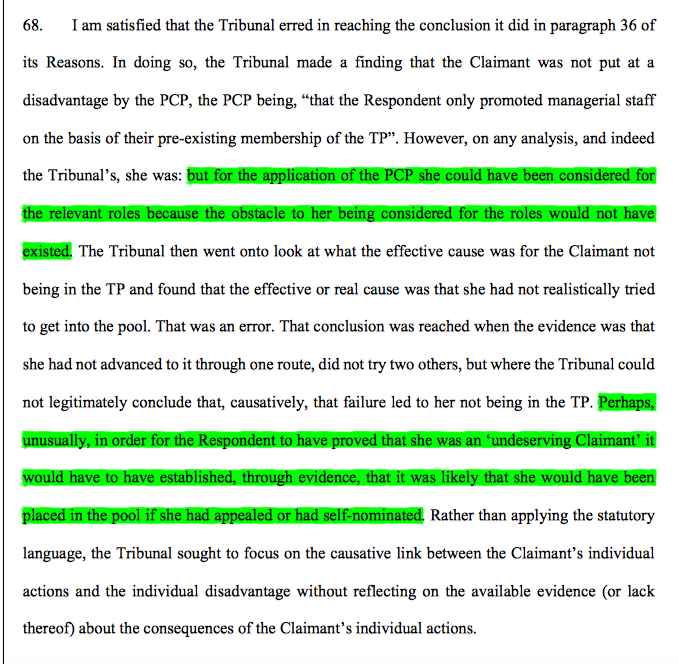
18/ Any argument otherwise critical of her failure to exhaust all means of getting into the TP wouldn't displace the fact of a lower likelihood of getting in due to the age range disadvantage. Her disadvantage is the same as the hypothetical 55-70yr old.
19/ In reaching that conclusion, HHJ Tucker noted the difference between a disadvantage framed in terms of likelihood as against achievement, echoing Lady Hale in Essop on that point. A likelihood disadvantage is suffered by all in the group sharing the protected characteristic. 

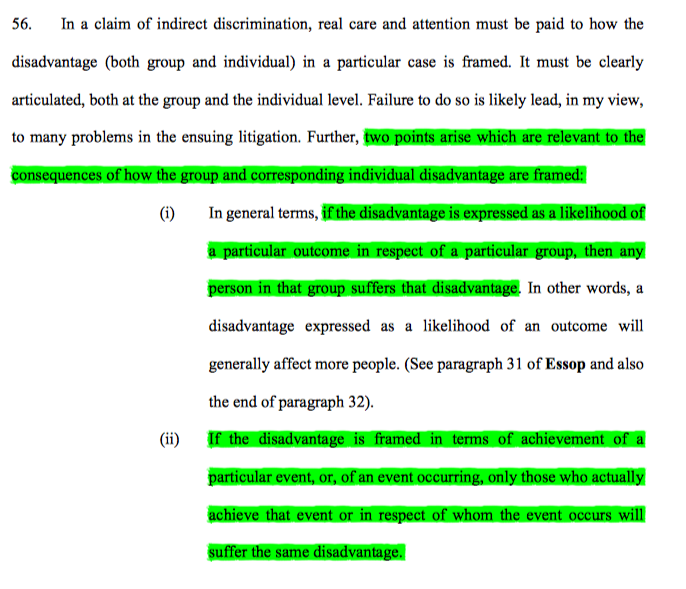
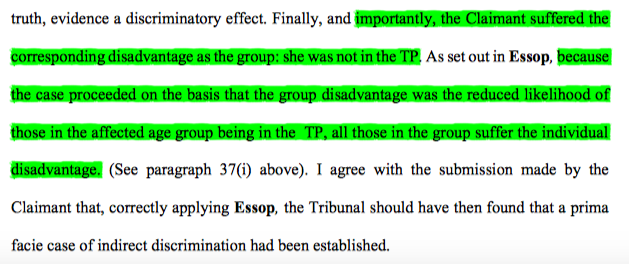
20/ Though for reasons set out in tweet 17, HHJ Tucker was keen to emphasise that even in a likelihood case it is still open to a Respondent to establish that the individual should be cast out of s.19 as an undeserving claimant. That remains the case even in a likelihood scenario 
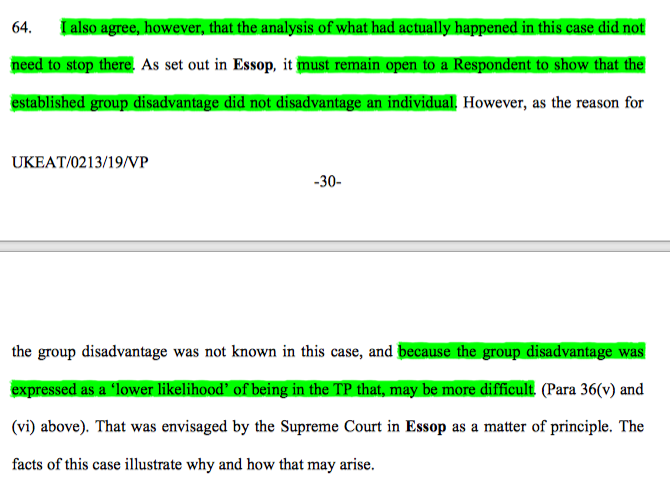
21/ Finally, following on from her pleadings advice in C v D, HHJ Tucker advised practitioners of the need to match up the group and individual disadvantage given the requirement under s.19 that the claimant suffer "that" disadvantage. Here the pleadings didn't match up. 

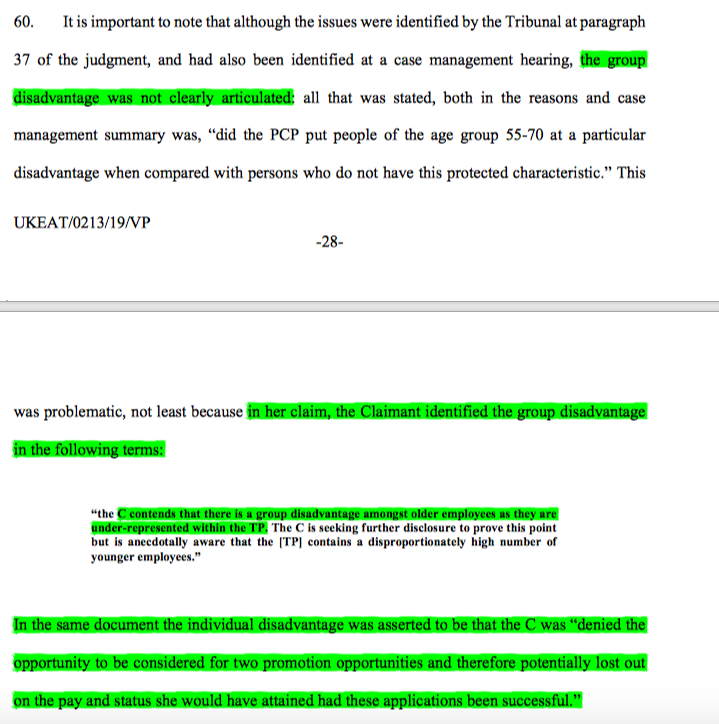
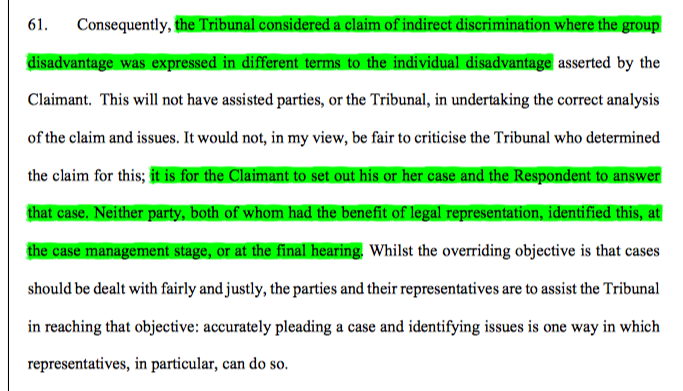
22/ And for those of you who are particularly fond of everything to do with Essop, I'll leave you as a treat with HHJ Tucker's 7 lessons from Essop on proof of disadvantage. One for certain to keep in the bank of quotes for indirect discrim claims. #ukemplaw 


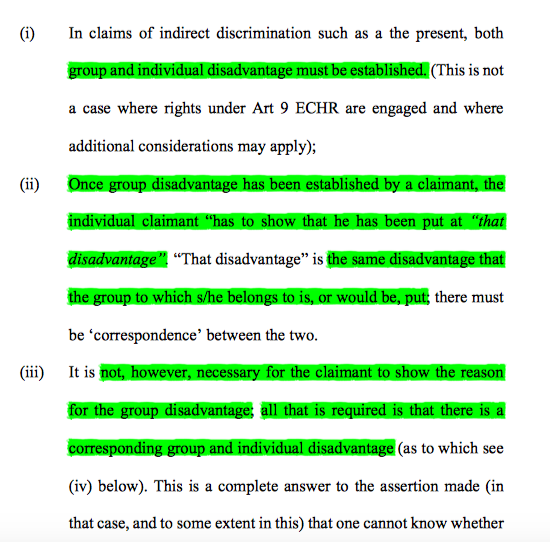
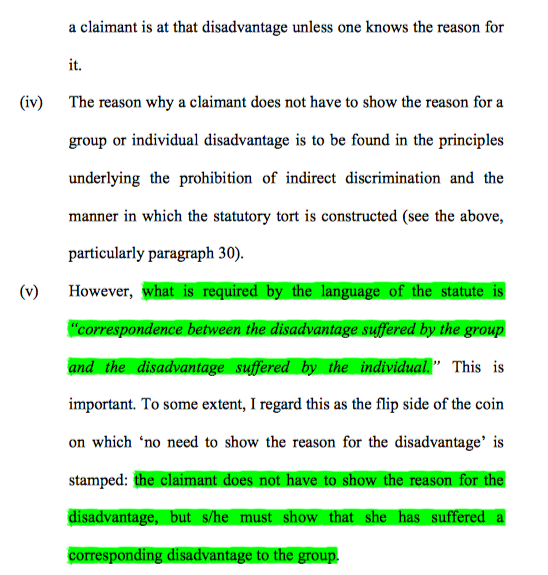
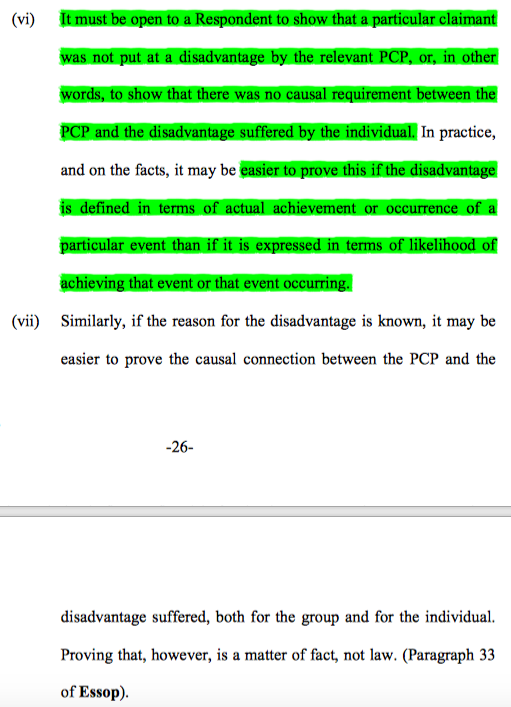
• • •
Missing some Tweet in this thread? You can try to
force a refresh






